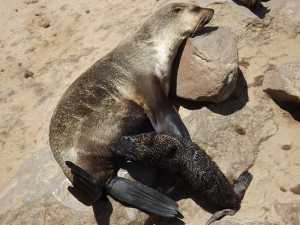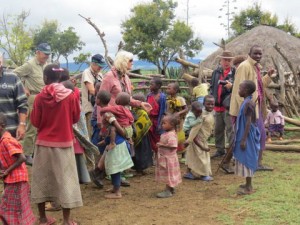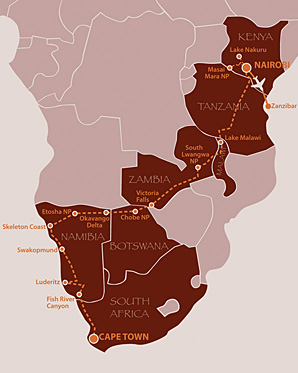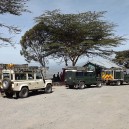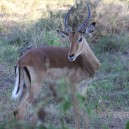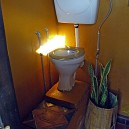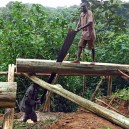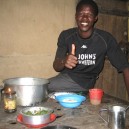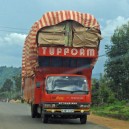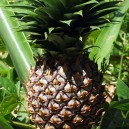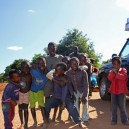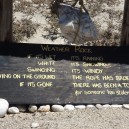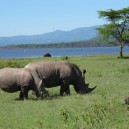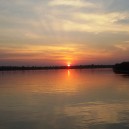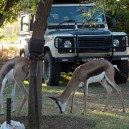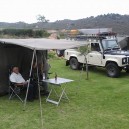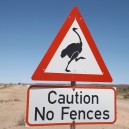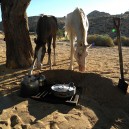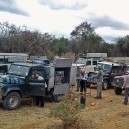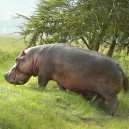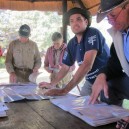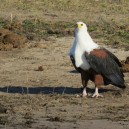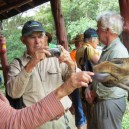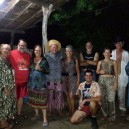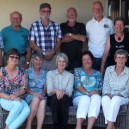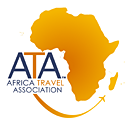Full-length Self Drive Safari Itinerary
(Click here for Cape Town to Nairobi Safari tour details)
Week 1: Cape Town, Stellenbosch and Fish River Canyon
Cape Town is the starting point for our 8 week guided 4×4 African adventure. We spend some time exploring this vibrant and multicultural city nestled between the Atlantic Ocean and Table Mountain. A daylong excursion into the wine region of Stellenbosch for wine tasting at various wineries is a must. We leave Cape Town for the Western Cape and the border to Namibia.
A total change of scenery awaits us from the lush green of the Cape to the desert and stunning rock formations of Namibia. Our first stop in Namibia is Fish River Canyon measuring 160kms in length and reaches up to 27km wide and 550m deep. Sitting at the top of the Canyon feels like you are sitting on the edge of the earth.
Week 2: Kolmanskop, Sesrium, Dune 45 and Swakopmund
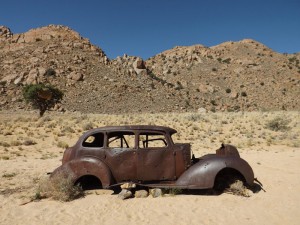
This 1934 Hudson Terraplane was supposedly driven by 2 diamond thieves who were shot down near the small town of Aus not far from Luderitz in Namibia.
Enroute to Luderitz is the diamond ghost town of Kolmanskop. Once a bustling diamond mining town until the slump in diamond prices after World War 1 and richer deposits discovered further south left Kolmanskop a mere reminder of what life was like before World War 1. Luderitz, an old Bavarian style German colonial town is a true step back in time. The icy shores of the South Atlantic Ocean are home to seals, penguins, flamingos and assorted marine life.
We continue overland to Sesriem National Park providing us the chance to climb Dune 45, the largest free standing sand dune in the World. On the way we will stop for an iconic Namibian tradition – home baked apple pie! Not something one would expect in the middle of the desert but it is an indulgent left over from the colonial times.
We take some time to warm up in Swakopmund, the desert adventure capital of Southern Africa, there are many activities including dune bugging, quad biking, sky diving and deep sea fishing or you may want to take in some culture with a township tour or a guided tour of the “living desert”. For those looking for more relaxed activities there are plenty of excellent restaurants serving famous Namibian seafood and traditional German food and beer.
Week 3: Cape Cross, Skeleton Coast, World Heritage Sites and Etosha National Park
Continuing our way North we stop for a brief visit at one of the largest Cape fur seal colonies in the Southern Hemisphere at Cape Cross before continuing our way up the Skeleton Coast. The Skeleton coast is a watery graveyard for many ships succumbing to her treacherous coastline; the beach is littered with shipwrecks as a ghostly reminder.
Twyfelfontein, a World Heritage Site is home to one of the largest and most important concentrations of rock art in Africa. The site contains around 2,000 rock carvings. The early Stone Age artists, probably the work of San hunters, engraved their art representing animals and significant ceremonial symbols and activities. We take a guided tour of the area to see some of the famous rock gravings and paintings.
Along the way we will stop to visit a Petrified Forest. The trees, distant relatives of modern day conifers and ferns, grew to over 40m high. These trees were uprooted over 200 million years ago and were swept along by rivers in flood, covered by sediments and then subsequently uncovered by erosion. Your local community guides will provide more of an insight into the area, whilst ensuring that pieces of petrified wood are not removed.
WHAT OUR CUSTOMERS SAY…
I loved my experience in Africa, the flora, fauna, the Africans and their ways. The 8 weeks of touring gave me just a little insight into their live, which was fantastic. It has certainly shown me a different picture of Africa to what I see and hear from the media in Australia.
As we continue overland we stop at the world’s biggest meteorite and Etosha National Park for our first proper game drive.
Etosha is Namibia’s draw card. A vast game park situated in the north of Namibia, with one half covered in salt pans and the other in forest and savannah plains makes for an unusual setting for such a large concentration of wildlife. Etosha’s distinctive landscape makes game viewing a breeze where often the wildlife will come to you. Simply park by one of the few watering holes and quietly wait as herds of giraffe, elephant, zebra, gemsbok and oryx make their way for a refreshing drink in the afternoon as prides of lions watch over. Etosha is also one of the few parks in Southern Africa to spot critically endangered black rhino in the wild.
In the evenings we can sit by one of the floodlit watering holes by our campsite and watch for wildlife, a perfect setting to unwind and enjoy a well-deserved sundowner.
Week 4: Kavango River, Chobe National Park, Victoria Falls
We continue through the Caprivi Strip and Northern Namibia to the northern tip of the Okavango Delta. The Kavango river is famous for its abundance of birdlife and African animals alike. We explore the area on a motorized platform, and spend a few hours game driving through the park.
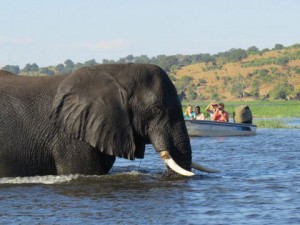
Enjoying an afternoon cruise along the Chobe River in Botswana spotting elephants frolicking in the water
We make our way to Botswana and Chobe National Park before taking the Kazangula ferry to Zambia. Chobe National Park is home to Botswana’s most varied wildlife. An abundance of wildlife exists along the river’s edge and it is here we take a leisurely cruise up the Chobe River.
Long before we reach Livingstone we can see the mist coming from the famous Victoria Falls. The mist becomes more pronounced as we arrive in the center of Livingstone, Zambia. The Zambezi River with its Victoria Falls is a natural border separating Zambia from Zimbabwe; the Falls leaves many speechless with her sheer size and power; 1 mile long and pumps an incredible 4.5 million cubic meters of water every second into the Zambezi Gorge.
Livingstone is the perfect base to enjoy the many activities on offer including a sunset cruise down the Zambezi; take an afternoon stroll with Rhinos; walk with lions, photograph the Falls from great heights in a micro light, spend a few hours in the impressive museum, explore local markets, white water raft; abseil and gorge swing in the Zambezi Gorge, bungee jump 111m with Victoria Falls providing the perfect backdrop – the options are endless.
Week 5: South Luangwa National Park and Lake Malawi
We venture into the heart of Zambia visiting South Luangwa National Park, one of the best kept secrets of African game parks. Not many travelers know about this outstanding park hidden in the Luangwa valley.
We base ourselves on the banks of the Luangwa River – a natural fence separating our accommodation from South Luangwa National Park. Elephants are very intelligent animals and seem to know when it is meal time in camp, they have been known to wander over and see what is on the menu – while they have not posed any problems it is worth steering clear and taking photographs from a distance while they search through the lead vehicle kitchen for tasty morsels. We explore the game park early in the morning and late in the afternoon into the evening, if we are lucky we will see some of the animals unique to this area.
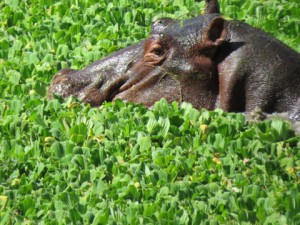
This hippos looks very content lazing in the water in the afternoon in South Luangwa National Park in Zambia
In the evening we will be entertained by an African choir, a symphony of hippos splashing, lions grunting in the distance, night birds chirping and hyena’s whooping.
We cross the border into the very relaxed country of Malawi. We follow the lake shore and enjoy the laid back atmosphere of this beautiful country. The speed limit in Malawi is 80kms per hour, and although there is very little motorised traffic there are plenty of pedestrians, livestock, cyclists and donkey carts sharing the road network. We weave our way through the “traffic”, game parks and finally to the shores of the majestic Lake Malawi.
Week 6: Livingstonia and Zanzibar
Lake Malawi is certainly what Malawi is famous for. This ancient lake is home to a number of once thought extinct prehistoric fish, it is possible to dive or snorkel in the clear blue waters. While in Malawi we will also venture to the small village of Livingstonia – an intellectual village dedicated to Dr Livingstone himself. Livingstonia is perched high on the hills overlooking the Lake and makes for some exciting 4WDing.
Tanzania is the next country on our epic guided self drive overland from Cape Town to Nairobi. Entering Tanzania we follow windy roads leading us into the cooler highlands, a welcome relief for some from the tropical weather of Malawi. Instead of driving the traditional way toward Dar es Salaam we choose to take a less travelled and more uncommon route through the heart of Tanzania. Spending our nights in charming local hotels and days navigating our way on a mix of brand new tar roads to narrow rough dirt tracks; up and over passes, through valleys, open wheat fields; wine producing regions and dense forest we will be amazed at the variety of the landscape.
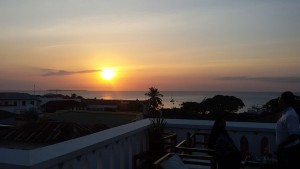
Relax and watch the sun disappear over the Indian Ocean from our hotels roof top restaurant in Stone Town on the magical island of Zanzibar
Arriving in Arusha, our base for the coming few days, we leave our expedition vehicles behind and fly to the island of Zanzibar for a well-deserved rest. Stone Town, the capital of Zanzibar boasts narrow cobbled streets; 19th Century Arabic influenced architecture and colourful market plazas. Zanzibar is home to some of the Worlds most acclaimed white powder beaches, exceptional barrier reef and isolated hideaways.
We are welcomed by the pleasant aroma of exotic spices gently permeating the clean sea air as we transfer to our accommodation in the heart of Stone Town. While on Zanzibar we will be treated to a spice tour and a scrumptious traditional Zanzibarian cooked lunch. With plenty of free time you may want to explore the historical town of Stone Town, visit the acclaimed museum, shop for rare antiques and artefacts from bygone years, visit turtle island, dive or snorkel to explore the reefs, try your hand at deep sea fishing, swim with dolphins, enjoy a sundowner at Africa House or simply relax on the white sandy beaches.
Week 7: Masai Culture, Diamonds and Game Parks
Returning to Arusha refreshed and energised we spend some time learning about the Masai culture, we are taken on a fascinating tour of the Masai Cultural Centre and local village in Meserani. The Masai culture is still very strong, generation after generation teach the young their traditions and rituals and these are passed to the next generation. The Masai are an intriguing culture; it is incredible they have managed to hold on to age old traditions and beliefs while blending only the modern western ways that are advantageous. While they may still dress and live the same way they did years ago, many value western education, access to the internet, electricity and mobile phones!
Tanzania is the only place in the World with deposits of Tanzanite. A mesmerising rare blue diamond found in and around Mt Kilimanjaro, it is the perfect gift for someone special at home. Arusha is the best place to purchase this precious stone.
Crossing into Kenya to explore the final country on our epic overland journey, our first stop is Amboseli National Park. Amboseli Natioanl Park is situated on the border between Tanzania and Kenya nestled at the foot of Mt Kilimanjaro and it is one of the few places Mt Kilimanjaro is fully visible in the mornings. Mt Kilimanjaro once belonged to Kenya before Queen Victoria of England gave it to her cousin, the German Kaiser as a birthday gift – or so how the myth goes!
Amboseli is one of Kenya’s premium parks and after a couple of hours you will understand why. Herds of elephant, large and small, move gracefully across the plains in the shadow of Mt Kilimanjaro while giraffe, warthog, eland, zebra, lion and many other animals graze without a blinking an eyelid as we pause along with our fellow intrepid travellers to observe and take countless photographs. A relatively small park with a high concentration of wildlife makes this national park unforgettable.
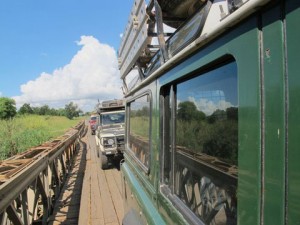
We drive through everything from stunning mountain ranges in Tanzania to rugged coastlines in Namibia to the tropical lands of Malawi
We make our way on some relatively unknown back roads through Masai country to our night stop perched on the edge of the Great Rift Valley. We spend the night in the guesthouse of Debs and Thiemo, AES Directors; enjoy a sundowner and casual meal as the sun disappears into the horizon.
We continue our journey to Lake Nakuru National Park, famous for its white and black rhino population and millions of pink flamingos gracefully perched in the shallows. We can drive right to the Lake’s edge; but be warned many 4x4s have been bogged doing just that! Lake Nakuru National Park is a charming park with a wide variety of landscape condensed into a small area, thick wooded areas are a favourite hangout for leopard, dik dik, waterbuck and black rhino; open plains are littered with families of white rhino, Rothschild giraffe, hippos, hyenas, jackals, impala, lions while the dramatic cliffs provide the perfect hideout for hyrax, baboons and vultures.
A visit to the village of Njoro and time to explore a local knitting project run by a local farm is a great opportunity to buy some unique last minute gifts and souvenirs.
Week 8: Masai Mara National Reserve and Nairobi Giraffe Centre
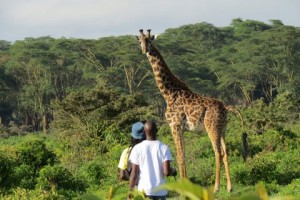
Feel very small next to these giraffes on a walking safari through Green Crater Lake Reserve in Kenya
A short distance from Nakuru is Lake Naivasha and “Elsamere” – the home of Born Free. Indulge in high tea, watch a video about Joy Adamson’s life and visit a little museum dedicated to Joy and George. Before departing for the Masai Mara we take a walking safari through Green Crater. There are not many places where it is safe to go on a walking safari, Green Crater lake is the exception. In the early morning animals come from the hills surrounding Lake Naivasha to graze on the sweet dewy grass in Green Crater Lake Reserve, as there are very few predators (namely no lions) we can enjoy an early morning stroll with a local guide amongst giraffe, zebra, eland, impala and gazelle.
Our final highlight is the Masai Mara National Reserve, otherwise known as the northern Serengeti National Park and home to the annual wildebeest migration.
Year after year the Masai Mara National Reserve is independently voted as the best game reserve in all of Africa. It is no wonder documentary after documentary has been filmed in this incredible diverse wildlife abundant game park. The Masai Mara was a favourite of David Attenborough and the location for filming the BBC Big Cat Diary series.
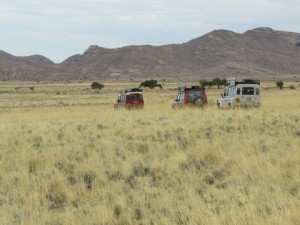
aking in everything from the amazing scenery to African animals while game driving through the Masai Mara National Reserve
Words cannot even begin to describe the Masai Mara National Reserve; driving on your own weaving along narrow tracks and negotiating seasonal creeks it is not long before you arrive at open plains littered with thousands of animals. The sight is truly unbelievable. As the animals know they are protected they simply go about their business without giving you a second look, often you will have to stop the vehicle to give way to a real zebra crossing, manoeuvre around a herd of buffalo as they stand in the middle of the path, and find an alternative route as a pride of lions nap on the track. The list of animals you are likely to see is endless from lion, leopard, wildebeest, rhino, warthog, cheetah, gazelle, zebra, giraffe, elephants, buffalo, hartebeest, reedbuck plus many more.
The Masai Mara National Reserve is a unique ecosystem home to thousands of various mammals, birds and reptiles. Reluctantly it is time to bid farewell to the Mara and head to our final destination, Nairobi.
Before hanging up our keys and saying our goodbyes we visit the David Sheldrick Elephant Orphanage to see first-hand amazing conservation work with orphaned elephants and hand feed endangered Rothschild Giraffes at the Nairobi Giraffe Centre.
We share a final meal together, raise our glasses and toast to our success of driving over 8,000kms through 7 of Africa’s most amazing countries.
This expedition also starts in Nairobi and finishes in Cape Town. Email Debs at info@africaexpeditionsupport.com for the full itinerary.

